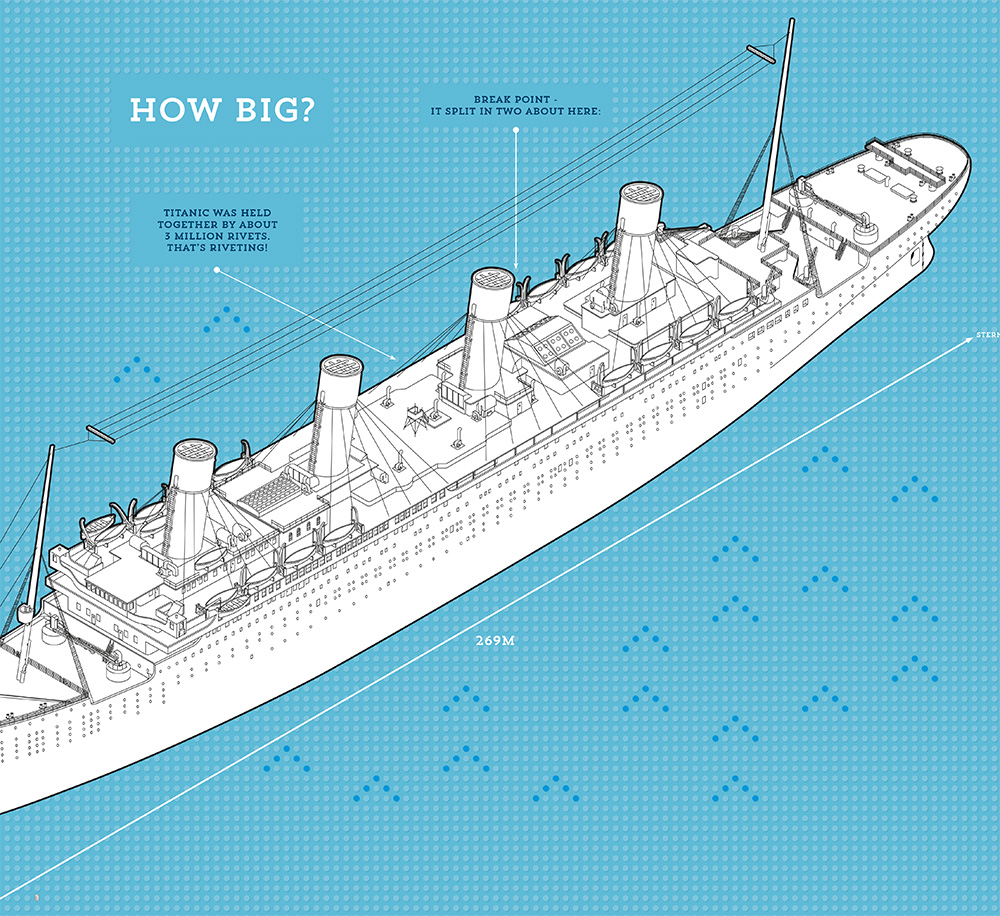TITANIC – WRECKED ON 15 APRIL 1912
Like Vasa and Batavia, Titanic sank on its maiden voyage – are you seeing a pattern here?
On 10 April 1912, the world’s largest ship, the 269-m-long RMS Titanic, set sail on a journey across the North Atlantic, from Southampton, England, to New York City. RMS stood for Royal Mail Ship, as it was contracted to carry post for the British Royal Mail.

Late at night on 14 April, Titanic hit an iceberg on its starboard side, and freezing water gushed in at 7,000 litres (about 45 bathtubs) a minute. It was designed to stay afloat if four of its forward compartments flooded, but we think the iceberg opened six of them.
In just over two and a half hours, Titanic sank, and 1,496 passengers and crew lost their lives.
Titanic radioed other ships in the area, but the closest vessel that answered was Carpathia, 93 km away. It arrived about four hours later and rescued the 712 survivors who’d made it into lifeboats. Titanic had only 20 lifeboats rather than the 48 needed to save everyone on board. Anyone floating in the icy ocean soon died from the cold.

Titanic was lost, but as one of the most famous shipwrecks in the world, and star of countless books and movies, it was never forgotten. Then, on 1 September 1985, a team led by oceanographer Robert Ballard and French explorer Jean-Louis Michel discovered Titanic’s wreck about 600 km southeast of Newfoundland, Canada. They had been searching for over a week, towing a submersible camera on a sled behind their ship.
‘The Titanic lies now in 13,000 feet of water on a gently sloping Alpine-looking countryside overlooking a small canyon below,’
said Ballard.
‘It is a quiet and peaceful place – and a fitting place for the remains of this greatest of sea tragedies to rest.’